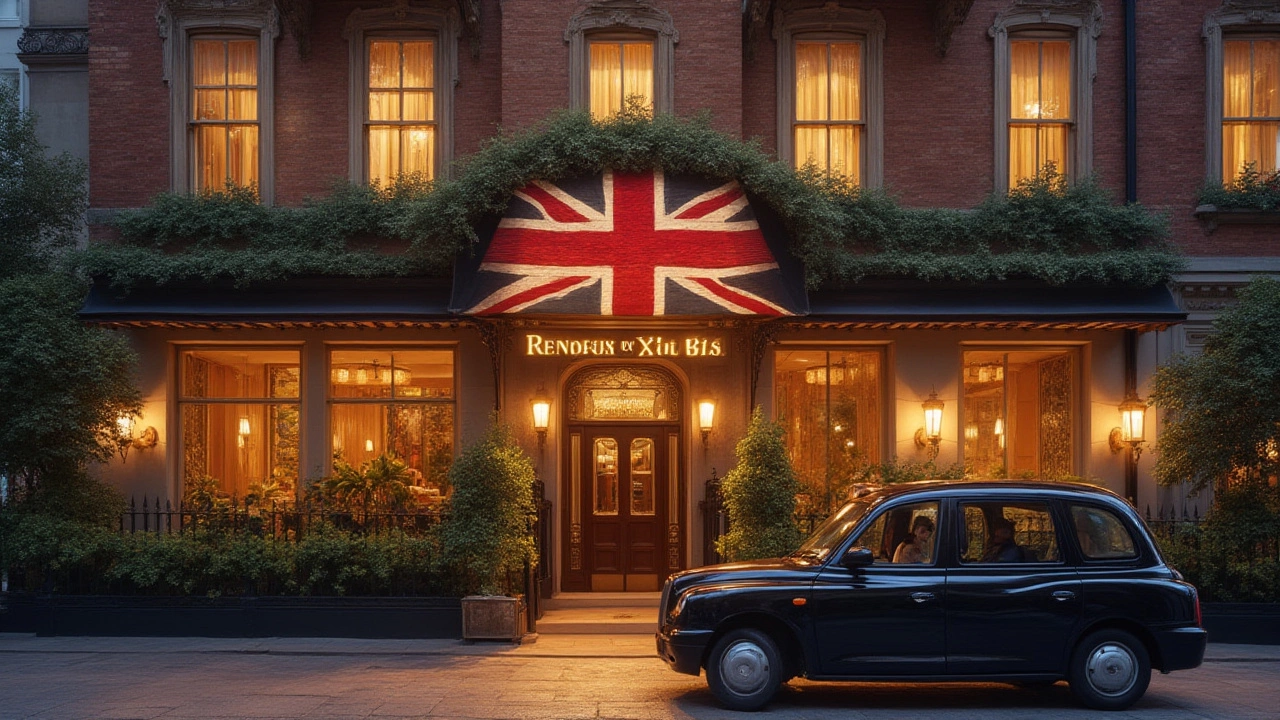If you think running a hotel is just about making beds and collecting payments, you’re missing the big picture. The heart of every hotel business pumps to a rhythm that’s more complicated—and much more interesting. Picture this: a hotel that welcomes people from all corners of the globe, juggling comfort, service, and profit, all while building a brand that stands out in a sea of competition. Even a budget motel next to a noisy highway or a five-star beach resort share a few big ambitions that shape every move they make. So what is the real goal of a hotel business? You might be surprised by how much goes on behind those automatic sliding doors.
Why Revenue Isn’t the Whole Story
Ask most people the point of a hotel, and they’ll say, “It’s to make money.” Sure, every business needs cash in the bank. But in hospitality, just banking those dollars isn’t enough. Hotels have to sell rooms, but how they do it is a delicate dance. Overpricing can leave those fresh white sheets untouched, while going too cheap means razor-thin margins. Then there’s the hidden revenue in the extras—think minibar snacks, late checkouts, and conference bookings that pad the bottom line. A smart hotel manager chases profitability, not just high occupancy. There’s a balance in turning each room into a profit engine without making guests feel squeezed. It’s about maximizing the value of every square meter, not just filling beds. In big cities, a hotel’s food outlets, parking garage, and even rooftop bars often out-earn room bookings themselves.
Breaking it down, some hotels run at 70% occupancy and still make more than others at 95%, just by nailing their mix of business travelers, event bookings, and long stays. Major chains like Marriott and Hilton fine-tune prices daily with revenue management tools powered by real-time data, tweaking room rates based on weather, holidays, and even local sporting events. That’s the competitive edge. Keep in mind, in recent years, hotels have battled fierce competition from booking apps and vacation rentals like Airbnb. This squeeze forces even the most traditional hotels to hunt for new ways to keep their rooms—and balance sheets—full.
The Secret Sauce: Guest Satisfaction
If cash is king, guest loyalty is the crown. No hotel can survive for long on one-off stays and bad reviews. The real test? Guests not only return, they rave online and tell friends. This takes more than a pretty room; it’s the staff remembering your name, a spotless bathroom, and a check-in that feels effortless—even when three flights land at once. Some hotels are now using AI-powered feedback surveys, real-time chat support, and even scent marketing to wow guests. It pays off: a 2020 study from Cornell’s School of Hotel Administration found that a one-point increase in a hotel’s average review score can boost room rates by nearly 11%. Now imagine that ripple effect over thousands of bookings.
There’s also the hidden cost of unhappy guests: negative reviews on TripAdvisor or Google can make or break local and international bookings. Tight service standards, regular staff training, and quick conflict resolution keep that reputation shiny. Add in personalized perks—like free upgrades for returning guests or tailored suggestions for dinner—and suddenly your hotel is more than a place to sleep. Hotels aiming for greatness actively use guest satisfaction as a key metric, benchmarking themselves not only against past performance but against direct competitors. Managers pore over guest comments and review scores the same way coaches watch game replays. It’s a relentless quest to make your stay unforgettable, but it isn’t just feel-good fluff—it directly feeds the bottom line.

Building a Powerful Brand in Hospitality
You might recognize a hotel brand by its logo, but there’s much more at play. The world’s top hotels sell a story with every check-in and checkout. A real goal is to build a brand with enough glue that it keeps guests coming back, not just to the same location, but anywhere in the world. Someone who trusts the pillow at a Holiday Inn in Houston will usually sleep again at their branch in Tokyo. That loyalty isn’t an accident. Chains sink millions into shaping an identity—eco-friendly, tech-forward, super-luxury, or even quirky and creative.
The rise of boutique hotels proves the point even further. These smaller outfits don’t rely on badge recognition; they play with bold design, hyper-local experience, and surprise touches to create a following. Take the Ace Hotel chain: it’s aimed millennial, music-loving travelers, and its lobby spaces almost double as co-working and coffee bars. They use art to set a vibe, DJs to anchor the scene, and partnerships with local brands to make guests feel plugged into the city, not just passing through.
Brand value goes way beyond logos and slogans. Recognizable brands can negotiate better rates with suppliers, get listed higher on travel platforms, and even weather economic storms with surprising resilience. After the pandemic slowed global travel to a crawl, recognizable brands had an easier time earning guest trust for cleanliness and booking flexibility. A hotel business that pours effort into its brand identity isn’t just chasing style points—it’s future-proofing itself.
Adapting to Change: Tech, Trends, and Guest Demands
Hospitality never stays still for long. Remember when TV remotes were considered high-tech in a hotel room? Today, guests expect mobile check-in options, streaming access, lightning-fast Wi-Fi, and instant digital payments. Hotels battle online reviews, shifting guest wants, and suddenly viral travel trends. That means constant innovation or risking being left behind. A clever goal for any hotel business these days is to be as agile as possible—pivoting fast to meet what tomorrow’s guests crave.
Some hotels have “robot concierges” handling check-in, touchless elevators, and digital room keys powered by smartphone apps. Environmental concerns are also front and center—guests expect visible sustainability moves like refillable toiletries, smart thermostats, and local food sourcing. COVID-19 ramped up the need for contactless experiences and cleanliness protocols. Hotels that adapt win extra points with both health-conscious travelers and local authorities. But those who can’t change fast enough? They end up in the dreaded “dated” category on booking sites.
Let’s not forget lifestyle shifts, either. Bleisure travelers—those combining business with leisure—spend nearly 30% more than traditional guests, so smart hotels now offer work-friendly lounges, fast internet, and easy access to local attractions. This adaptability, from tech tricks to reimagined guest services, is less about shiny new toys and more about survival. For many hotels, a real goal is to watch change closely and be first—not last—to give guests what they want next.

Long-Term Sustainability and Success
It might sound unglamorous, but a hotel’s long game isn’t just about tomorrow’s bookings. The hidden backbone of successful hotels is their ability to plan five, even ten years ahead. Buildings need upgrades, staff need training, regulations change, and travel trends shift with global events. A hotel business aiming for true success keeps investments steady even in slow seasons, bets on talent, and carves out a niche that will last when fads pass.
Go back just a decade: hotels with “classic” interiors are now refitting with modern, eco-conscious features because guests demand it. Those who ignored reviews or dropped service standards found themselves outpaced by competitors with tighter operations and fresher ideas. A wise hotel owner constantly scans guest feedback, market analysis, and global trends. Some of the world’s most stable hotel chains invest heavily in ongoing staff development and back-end technology—no headlines, but massive results over the years. Smart energy use, community partnerships, and employee satisfaction programs all point toward a goal that’s way bigger than immediate profit: staying in business for the long haul.
So, what’s the real goal of a hotel business? Beyond packed rooms and healthy profits, it’s about delivering guest experiences so compelling they create loyalty; building a brand people trust; adapting to new demands before others do; and investing so today’s hotel can thrive in tomorrow’s world. Sounds simple, but it takes missing a whole lot of sleep to do it right.

